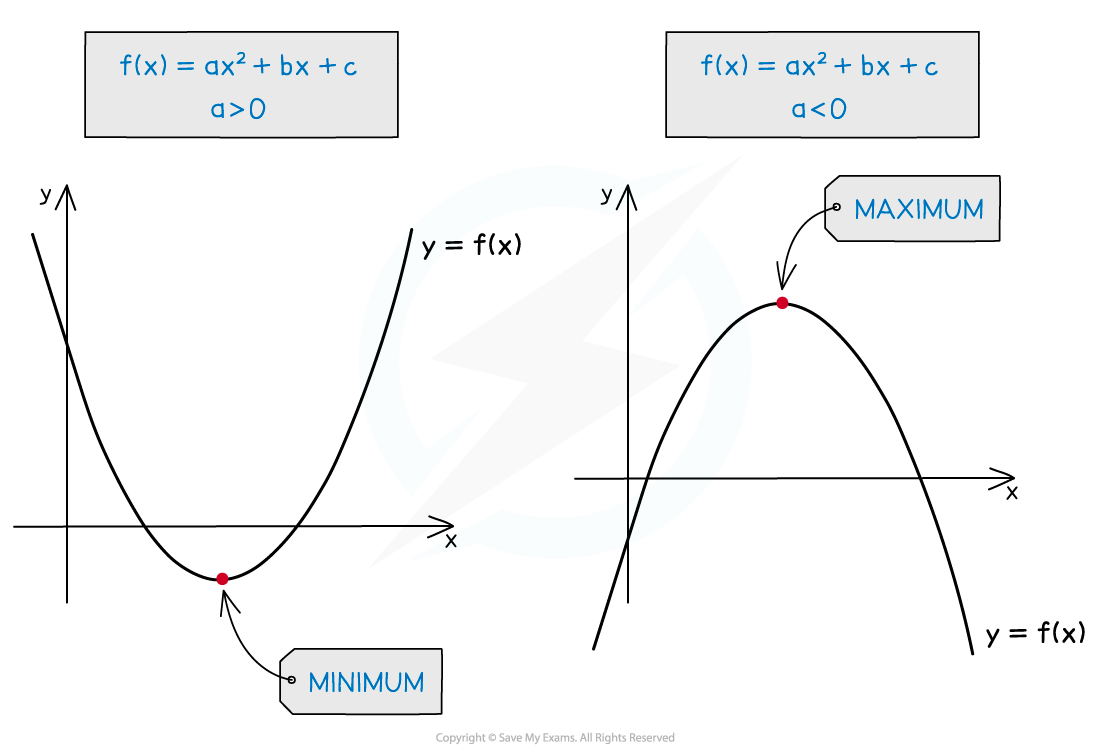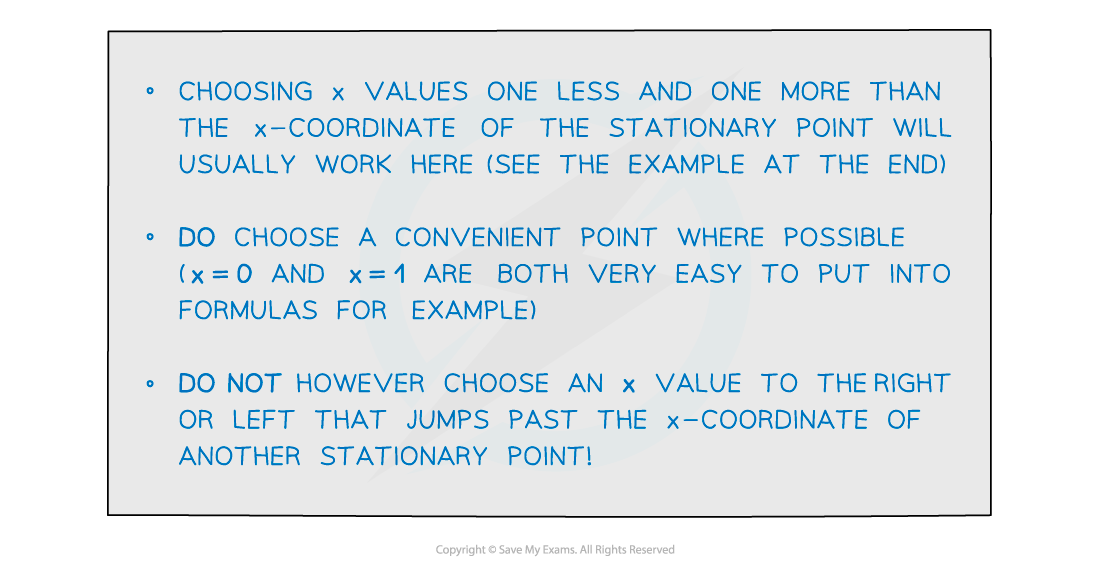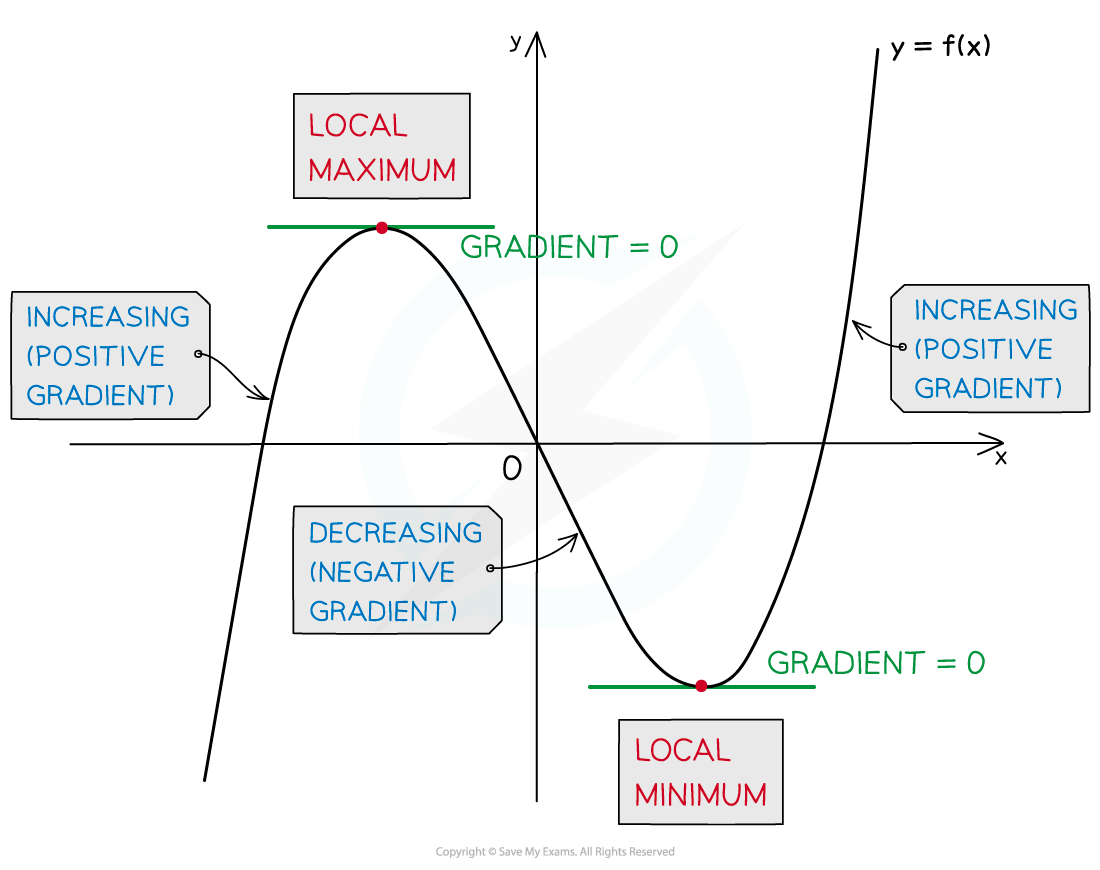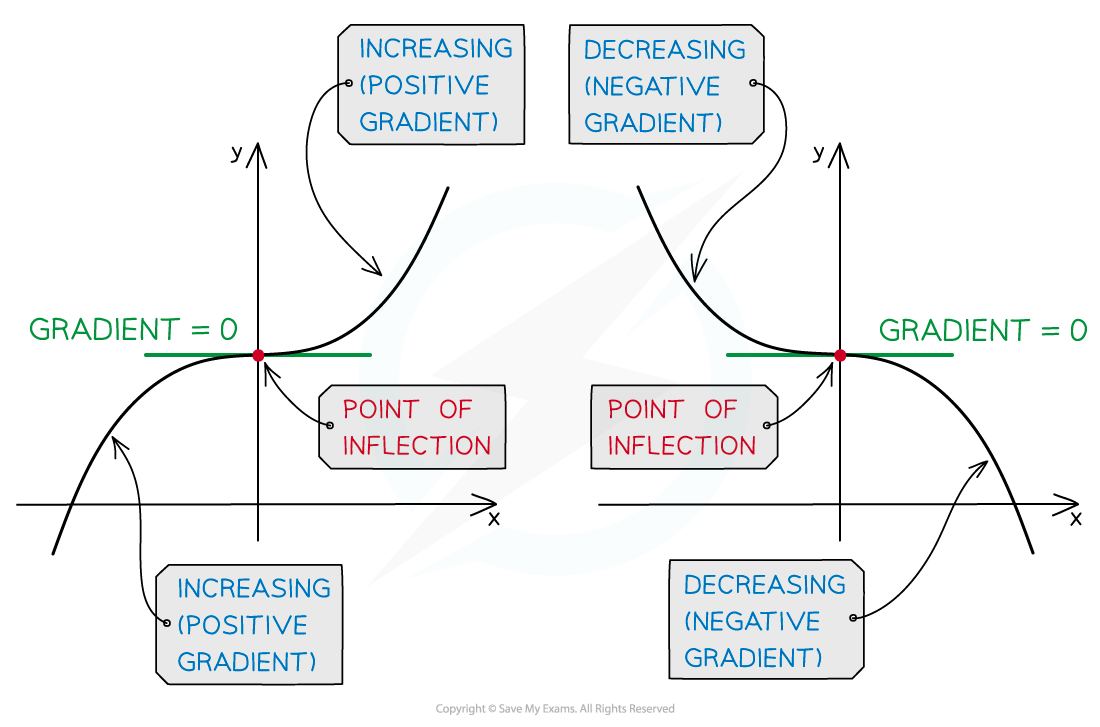Stationary Points & Turning Points (AQA GCSE Further Maths): Revision Note
Exam code: 8365
Stationary points & turning points
What are stationary points?
A stationary point is any point on a curve where the gradient is zero
To find stationary points of a curve
Step 1
Find the first derivative
Step 2
Solve to find the
-coordinates of any stationary points
Step 3
Substitute those -coordinates into the equation of the curve to find the corresponding
-coordinates
A stationary point may be either a local minimum, a local maximum, or a point of inflection

Stationary points on quadratics
The graph of a quadratic function only has a single stationary point
For a positive quadratic this is the minimum; for a negative quadratic it is the maximum
No need to talk about 'local' here, as it is the overall minimum/maximum for the whole curve

The y value/coordinate of the stationary point is therefore the minimum or maximum value of the quadratic function
For quadratics especially, minimum and maximum points are often referred to as turning points
How do I determine the nature of stationary points on other curves?
For a graph there are two ways to determine the nature of its stationary points
Method A
Compare the signs of the first derivative,
, (positive or negative) a little bit to either side of the stationary point
(After completing Steps 1 - 3 above to find the stationary points)
Step 4
For each stationary point find the values of the first derivative a little bit 'to the left' (i.e. for a slightly smaller x value) and a little bit 'to the right' (i.e. for a slightly larger x value) of the stationary point

Step 5
Compare the signs (positive or negative) of the derivatives on the left and right of the stationary point
If the derivatives are negative on the left and positive on the right, the point is a local minimum (a u-shape)
If the derivatives are positive on the left and negative on the right, the point is a local maximum (an n-shape)
If the signs of the derivatives are the same on both sides (both positive or both negative) then the point is a point of inflection (a
shape)


Method B
Look at the sign of the second derivative (positive or negative) at the stationary point
(After completing Steps 1 - 3 above to find the stationary points)
Step 4
Find the second derivative
Step 5
For each stationary point find the value of at the stationary point
i.e. substitute the x-coordinate of the stationary point into and evaluate
If
is positive then the point is a local minimum
If
is negative then the point is a local maximum
If
is zero then the point could be a local minimum, a local maximum OR a point of inflection
use Method A to determine which
Examiner Tips and Tricks
Usually, using the second derivative (Method B above) is a much quicker way of determining the nature of a stationary point.
However, if the second derivative is zero it tells you nothing about the point
In this case you will have to use Method A
This method always works – see the Worked Example
Worked Example
Find the stationary points of
and determine the nature of each.
Start by expanding the brackets in the expression for
Step 1
Find the first derivative
Step 2
Solve
Divide through by 15
Fully factorise, spotting the difference of two squares
Solve to find the -coordinates of the stationary (turning) points
Step 3
Find the corresponding -coordinates
Write the answers as coordinates, being careful to correctly match 's and
's
The stationary points are (0, 0), (-2, 64) and (2, -64)
To find the nature of each stationary point, start with Method B
Step 4
Find the second derivative
Step 5
Evaluate the second derivative at each stationary point
= 0
< 0
> 0
The nature of two of the stationary points is now determined
(-2, 64) is a local maximum point
(2, -64) is a local minimum point
For the third stationary point, (0, 0) switch to Method A
Step 4
Compare first derivatives a little to the left and right of
Choose and
< 0
< 0
Step 5
Interpret the result and state the answer
has the same sign on both sides of (0, 0)
(0, 0) is a point of inflection

Unlock more, it's free!
Did this page help you?